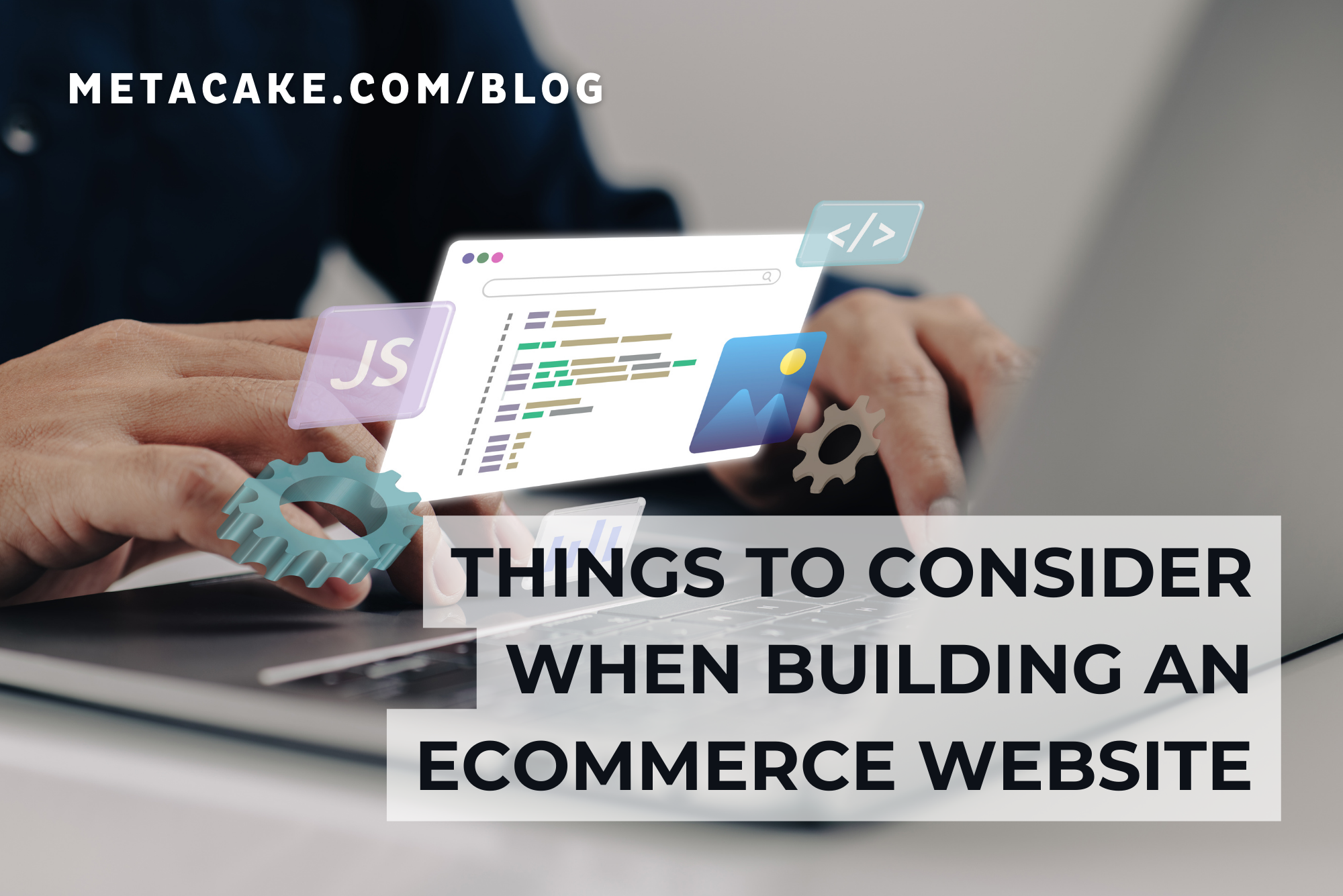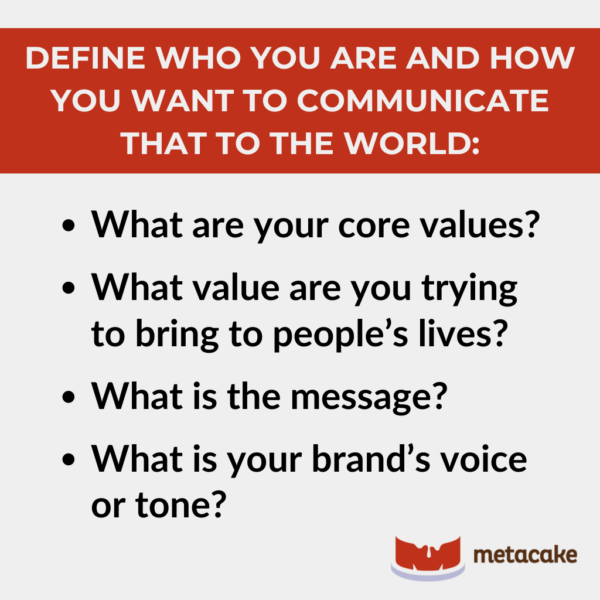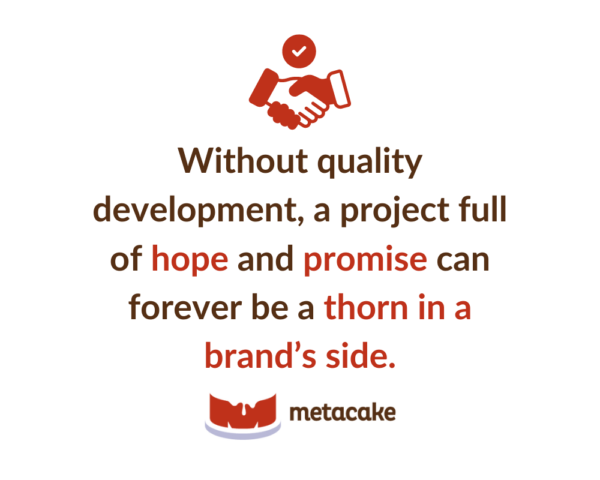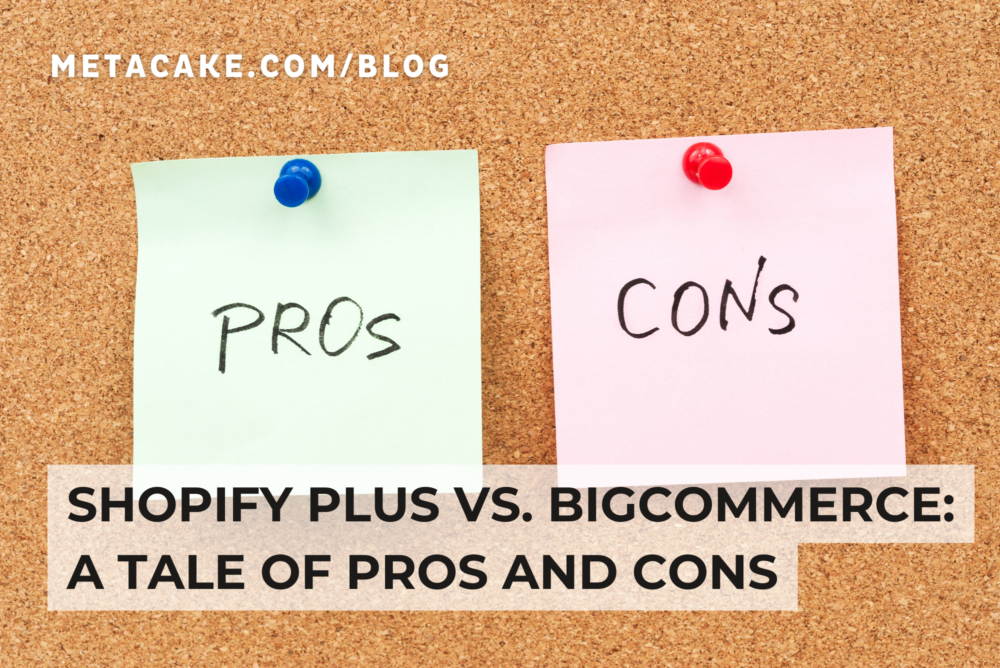
Things to Consider When Building an Ecommerce Website
Today, everyone wants the most up-to-date web tools, like a website, mobile app, or blog. However, when it comes to building a web presence, the latest and greatest web tool may not be the ideal place to begin.
A brand’s online presence extends far beyond the communication tool used. And unless we’re ready to take a step back, we risk missing out on a brand’s full potential online.
In this article, we’ll dive into some common things to consider when building an ecommerce website.
What to Consider When Building an Ecommerce Website
The following is a list of things to consider when building an ecommerce website. These are what stand between a good experience and a potentially terrible experience with your brand online.
What Are My Goals?
To define our business goals, we must first understand the commonly misunderstood difference between strategy, objectives, tactics, and goals.
- Strategy: the approach you take to meeting a goal
- Objective: the step you take within your strategy
- Tactic: the tool you use to accomplish an objective
- Goal: the primary outcome and the best place to start when trying to determine what kind of digital product you actually need
Here are a couple examples of online goals:
- “Generate $600,000 in revenue from online sales this year.”
- Or, if you’re not looking to monetize: “Educate 200,000 people about my cause.”
Once we have our target, we can intelligently evaluate how the web tool we thought we needed could (or couldn’t) help us hit it.
How Would This Web Tool Help Me Meet My Goals?
Every year, we receive an overwhelming number of inquiries from clients about the cost of developing a mobile app. And why wouldn’t they ask? Every customer has a mobile phone in their pocket, and every competitor is developing an app of some sort.
However, after evaluating our client’s business goals, we found that one out of every three times, the web tool they thought they needed was in fact not what they needed.
Take our above example: “How will a mobile app help us generate $600,000 in revenue this year?”
As it turns out, although mobile traffic to retailer websites and apps is growing, shoppers are still much less likely to make purchases using their mobile device as compared to a desktop.
This alone indicates that a mobile app may not be the most effective approach for growing income. A better method for capturing mobile customers — while saving time and money — could be optimizing an already functional website for mobile.
But, again, the type of tool required can’t be determined by our 50,000-foot goals alone. We must also identify who we’re aiming to reach.
Who Am I Trying to Talk To?
“In order to persuade your audience to consider, try or purchase your product,” says Jason Falls, the Founder of Social Media Explorer, “you must, beyond all other requirements, know that audience.”
Defining our future audience and/or studying our current one is the quickest way to determine what web tool we actually need and how to go about reaching them.
We don’t use the same methods, language, or approach to market luxury glassware to seniors as we do to mobilize millennials behind our company’s cause, do we? Of course not!
We must become apprentices to the customers we’re attempting to communicate with online, allowing their interests and common modes of communication to shape our web plans.

Do I Have a Brand?
This may seem elementary, but the importance of getting back to the basics is imperative in building a lasting brand online.
The truth is we can build you the nicest website possible, but it’s absolutely impossible to effectively digitize a brand that doesn’t have a brand. Imagine that!
Here are a few places to start defining who you are and how you want to communicate that to the world:
- What are your core values or the things you find truly important as a brand? Read about Zappo’s core values here.
- What value are you trying to bring to people’s lives? Read How to Write a Value Proposition by Help Scout.
- What’s the message you’re trying to communicate? It’s not “buy this here.” It’s “live the dream by buying this here.”
- What’s your brand’s voice or tone? Humorous, friendly, or exclusive?
Once you’ve narrowed down the type of tool that would best suit your brand, your next step is to ask how the project will really be executed.
What Would I Consider a Success?
Defining exactly what you want your new web tool to accomplish helps set expectations on the front end of a build. What would be an exceptional ROI? Moderate ROI? Poor ROI?
For example: “If this tool made my brand look classy, sound professional, and turn at least 20% of visitors into customers, it would be worth the investment.”
And once expectations are in place, we must define a good product versus a great one.
Do I Know What Quality Looks Like?
There are hundreds of developers who claim they can build anything online that you can dream up. Unfortunately, there’s a massive difference between good code and bad code. This is why so many of our new clients come to us to try and salvage a mess that was previously made.
Just because a website or app looks pretty doesn’t mean it’s of good quality or a functional product. And let’s be clear: the most important long-term element of a web tool is the quality of its experience, i.e., great design and great code.
Without quality development, a project full of hope and promise can forever be a thorn in a brand’s side.
Don’t take it from us. Take it from Derek Halpern and others in this post, Have you ever hired a web developer and felt cheated? (Be sure to read the stories in the comments.)
Also, be sure to check out Ugly Mug Marketing’s How to Avoid Getting Ripped off by a Web Developer.
But don’t lose heart. There are also very talented and capable developers out there. You simply must do your due diligence in finding them.
It just so happens that the next two sections may help you determine exactly who it is you’re looking for to build this tool.

What Are My Plans to Evolve This Web Tool?
The only thing consistent on the web is change. In building anything online, you must expect to both iterate the product and maintain it with ongoing support.
This evolution can play a significant role in what you build and, more importantly, who you get to build it.
Do I Want a Short-Term Tasker or a Long-Term Partner?
Not only is it important to thoroughly check the quality of a developer’s work, but it’s equally important to make the hiring decision based on whether you want a short-term or long-term partner.
Do you want someone to step in for a season, build it, and move on, or do you want a partner to build, iterate, and maintain your tool over time?
We strongly recommend the latter.
Things to Consider When Building an Ecommerce Website: Final Thoughts
We recommend that, regardless of the tool, you don’t rush into building anything online. Take the time to go over the things to consider when building an ecommerce website. We can guarantee that it’ll make all the difference for a better experience, a better product, and a better brand online.
This may mean you don’t hire the first or cheapest developer that bids for the job. Or it may mean that you take some time to develop your brand, your voice, and your vision before green-lighting the writing of a single line of code.
If you find yourself needing help in any of these areas, please feel free to reach out; we’ll give you a hand!


